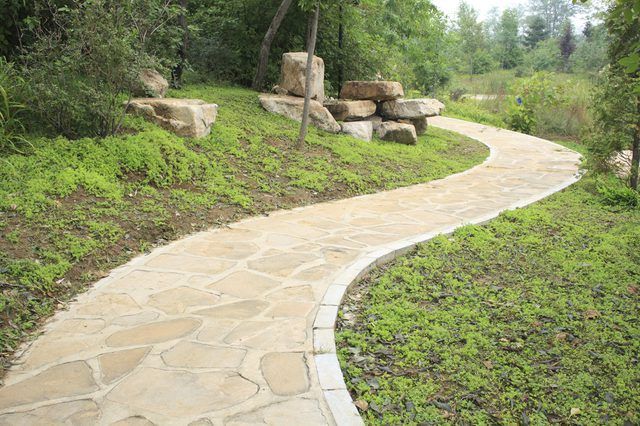Bulbs
Flower Basics
Flower Beds & Specialty Gardens
Flower Garden
Garden Furniture
Garden Gnomes
Garden Seeds
Garden Sheds
Garden Statues
Garden Tools & Supplies
Gardening Basics
Green & Organic
Groundcovers & Vines
Growing Annuals
Growing Basil
Growing Beans
Growing Berries
Growing Blueberries
Growing Cactus
Growing Corn
Growing Cotton
Growing Edibles
Growing Flowers
Growing Garlic
Growing Grapes
Growing Grass
Growing Herbs
Growing Jasmine
Growing Mint
Growing Mushrooms
Orchids
Growing Peanuts
Growing Perennials
Growing Plants
Growing Rosemary
Growing Roses
Growing Strawberries
Growing Sunflowers
Growing Thyme
Growing Tomatoes
Growing Tulips
Growing Vegetables
Herb Basics
Herb Garden
Indoor Growing
Landscaping Basics
Landscaping Patios
Landscaping Plants
Landscaping Shrubs
Landscaping Trees
Landscaping Walks & Pathways
Lawn Basics
Lawn Maintenance
Lawn Mowers
Lawn Ornaments
Lawn Planting
Lawn Tools
Outdoor Growing
Overall Landscape Planning
Pests, Weeds & Problems
Plant Basics
Rock Garden
Rose Garden
Shrubs
Soil
Specialty Gardens
Trees
Vegetable Garden
Yard Maintenance
How to Prevent Weeds in Stone Pathways
Hot water, flame weeders, organic and systemic herbicides help prevent weeds from infesting stone pathways.
Preventing weeds from returning to stone pathways year after year is a long-term project. Weeds sprout from seeds in cracks or roots that extend beneath the stone, making them difficult to remove. A range of methods helps provide control. Nontoxic options include hot water, flame weeding and organic herbicides, which work best on young, small weeds. For established perennial weeds, systemic weedkillers are an effective option.
Tip
Annual weeds live only one growing season, but perennial weeds return every year.
Warning
Most weed control methods and herbicides are harmful to other plants. Protect plants you wish to keep if you're controlling weeds close by, and don't spray herbicides on windy days.

Hot Water
Water left over from cooking and other hot water controls small weeds and helps prevent perennial weeds from returning. The water must be hot enough to destroy weed leaves and stems.
Things You'll Need
Pruning shears
Rag
Rubbing alcohol
Closed-toe shoes
Heatproof gloves
Step 1
Prune the weeds to 1 inch above the pathway surface. When you've pruned all the weeds, wipe the pruning shear blades with a rag soaked in rubbing alcohol.
Step 2
Put on closed-toe shoes and heatproof gloves, hold a container of hot water 2 or 3 inches above the center of each weed, and slowly pour out the water until the leaves become limp.
Step 3
Pour hot water on the weeds on the pathways every week for six to eight weeks.
Tip
Hot water may also control weed seeds.
Flame Weeding
Flame weeders produce a flame that damages weed tissues but doesn't harm stone pathways. Controlling weeds with flame weeders first involves damaging the plants, then later burning the dead plant tissue. This tactic is most effective on small perennial weeds and annual weeds.
Wear long pants and closed-toe shoes when using a flame weeder. Walk slowly along the pathways, holding the flame just above the weeds so that they discolor and wilt. The following week, use the flame weeder to burn the dead weeds.
Tip
Flame weeding is most effective in warm, dry weather.
Warning
Don't use a flame weeder in areas that prohibit open fires or are at risk of wildfires, and don't use flame weeders near wooden fences, organic mulches or other flammable objects.
Organic Herbicides
Ingredients in organic herbicides include acetic acid, citric acid, clove oil, cinnamon oil and lemongrass oil, which help control young broadleaved weeds but are less effective at controlling grassy weeds or established perennial weeds. Multiple treatments may provide effective control. Organic herbicides work best in full sunlight and when temperatures are above 75 degrees Fahrenheit.
A high-concentration acetic acid herbicide such as herbicidal vinegar controls many weeds on stone pathways. Put on long pants, a long-sleeved shirt, safety goggles and gloves, and spray all weed parts with a 10 percent to 20 percent concentration herbicidal vinegar. Check the pathways every week, and spray any weeds that regrow.
Systemic Herbicides
Systemic herbicides prevent weeds on stone pathways from returning by controlling weed roots. Glyphosate and other systemic herbicides move through weeds to their roots and control the whole plant. The best time for controlling perennial weeds such as dandelion (Taraxacum officinale), Bermuda grass (Cynodon dactylon) and creeping wood sorrel (Oxalis corniculata) is late summer or fall, when the plants are storing energy in their roots for winter. Dandelion is hardy in U.S. Department of Agriculture plant hardiness zones 3 through 9, Bermuda grass is hardy in USDA zones 7 through 10, and creeping wood sorrel is hardy in USDA zones 4 through 8.
Put on protective clothing, and spray the weeds with a ready-to-use 2 percent glyphosate herbicide when temperatures are above 60 degrees Fahrenheit. Glyphosate takes three days or longer to work.
For information on managing weeds in pebbled walkways, see How to Keep Weeds Out of a Pebble Path.